An Entombed 1954 Corvette From Maine Finds Its Way to Bowling Green, Kentucky
The story of this 1954 Corvette is the kind of tale you hear once or twice in a generation. Although there are some unique and uniquely bizarre elements to this narrative, we think you’ll agree it’s also quite incredible.
The story starts, as you might expect, in 1954. Richard Sampson of Brunswick, Maine, decided to purchase a brand new Corvette. The car, which bore the serial number E54S001147, was one of just 3,640 Corvettes produced that year.
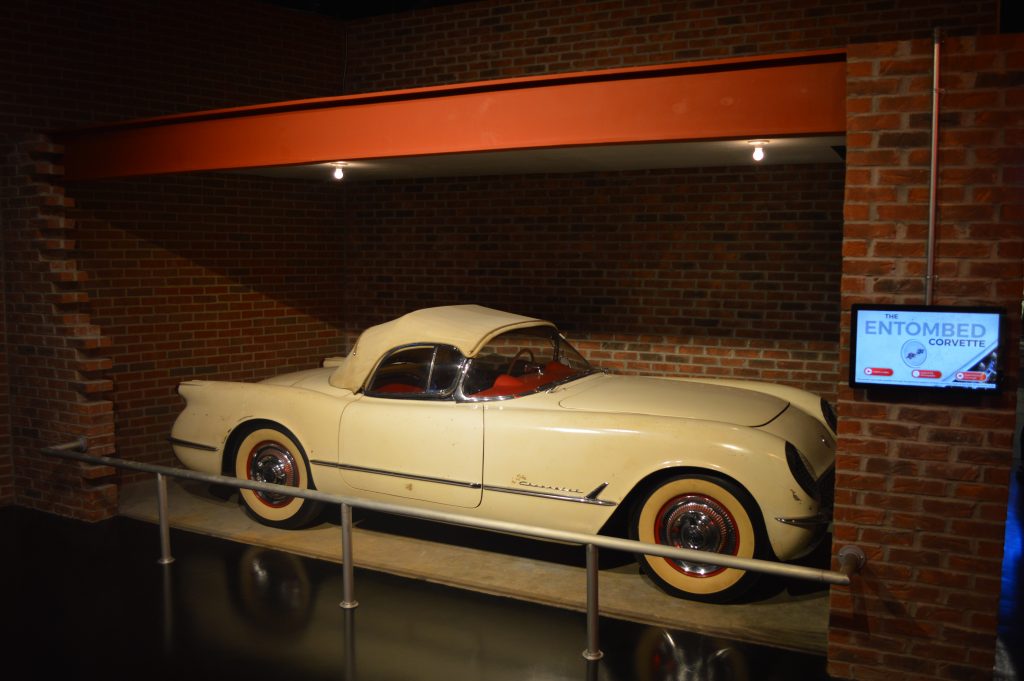
Excited to have the car, Richard drove it regularly for almost five years, In 1959, feeling the continual disappointment of driving a car that his wife did not enjoy, Richard decided he no longer wanted to drive it either. However, he wasn’t ready to part with the beautiful Corvette that had so completely caught his attention a half-decade earlier.
Instead, Richard Sampson elected to do something immensely unconventional with his Corvette.
Mr. Sampson was in the process of erecting a new building to expand his chain of local grocery stores. During a meeting with his construction company, he expressed his desire to have his Corvette entombed in the new store. The construction team obliged and Sampson’s car was carefully encased, brick-by-brick, within the new grocery store.
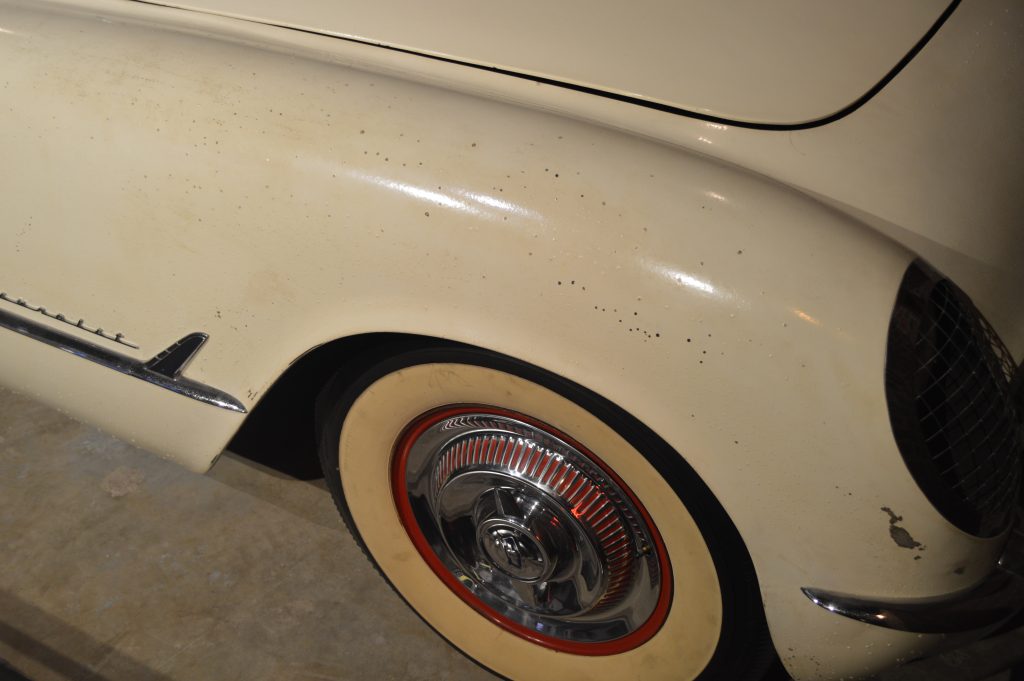
Richard Sampson stated in his will that his Corvette was not to be removed from his man made ‘time capsule’ until the year 2000. A small viewport was built into the tomb at Sampson’s request so that he could continue to observe and admire his car. Shortly before Sampson’s death in 1969, he rescinded the stipulation that the car should remain entombed.
The grocery store was purchased by new owners in 1982. The car still rested in its original tomb. When the new owners purchased the building, it was with the understanding that the car must be removed from the premises.
Wesley and Will Irving began dismantling Sampson’s tomb in 1986. They knew they had to work carefully to avoid damaging the Corvette encased within, so they worked methodically, tearing down the tomb walls one brick at a time. Once complete the Corvette, which now belonged to Richard Sampson’s daughter Cynthia, was carefully removed from its burial vault. From there it was transported to Daytona Beach, Florida, and placed inside her living room for another 10 (ten) years.
This 1954 Corvette has changed hands a few times since then and even crossed the Barrett Jackson auction block in 2016. However, the car has accumulated only 2,344 miles since new.
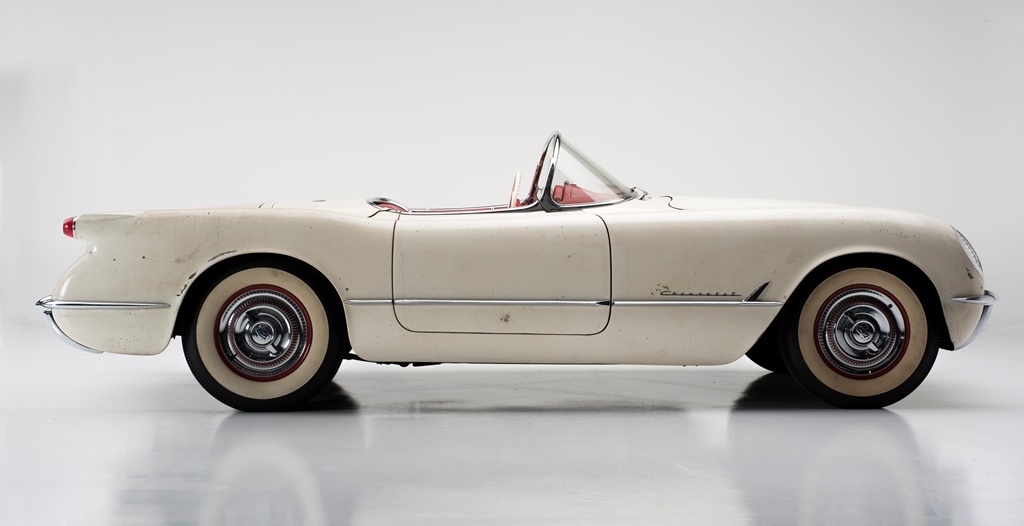
Today, this unique Corvette was donated to and resides at the National Corvette Museum. The donors, who wished to remain anonymous, felt that the Museum could properly preserve the car for future generations to experience and enjoy.
“The donors reached out to see if we would have an interest in the car,” said Derek E. Moore, Director of Collections / Curator. “We talked a little about the significance of it, as well as keeping it in original condition. We know we want to recreate the tomb in some fashion, a diorama or vignette setting. We’re excited to share this unique piece of history!”
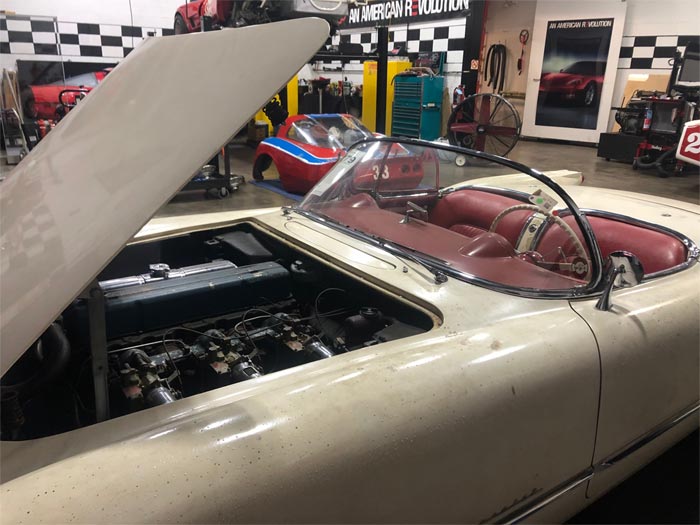
The car was not restored from its earlier, original condition. Instead, all of the panel imperfections and paint blemishes remain for visitors to see. The car’s body panels did suffer some early stages of decomposition, due in part to the limited sealant qualities of the materials and paints used in the 1950s. The Corvette Museum has since had the Corvette’s body decomposition stabilized and sealed to prevent further damage to the car.
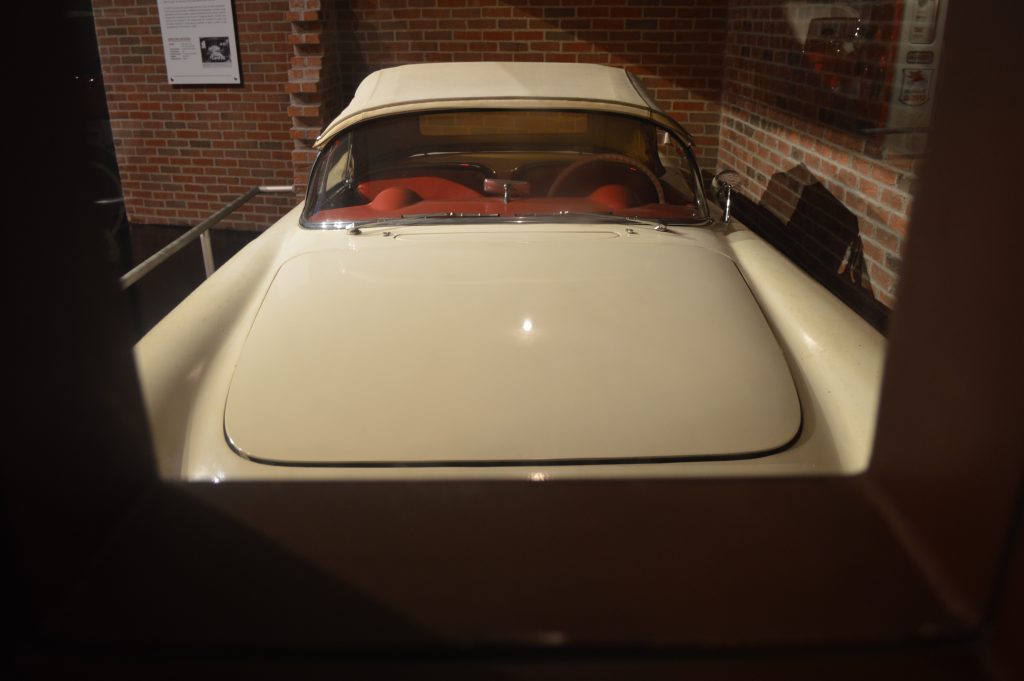
The car is now on permanent display at the National Corvette Museum. It is presented in a cutaway recreation of the original vault where it spent more than 25 years of its life.


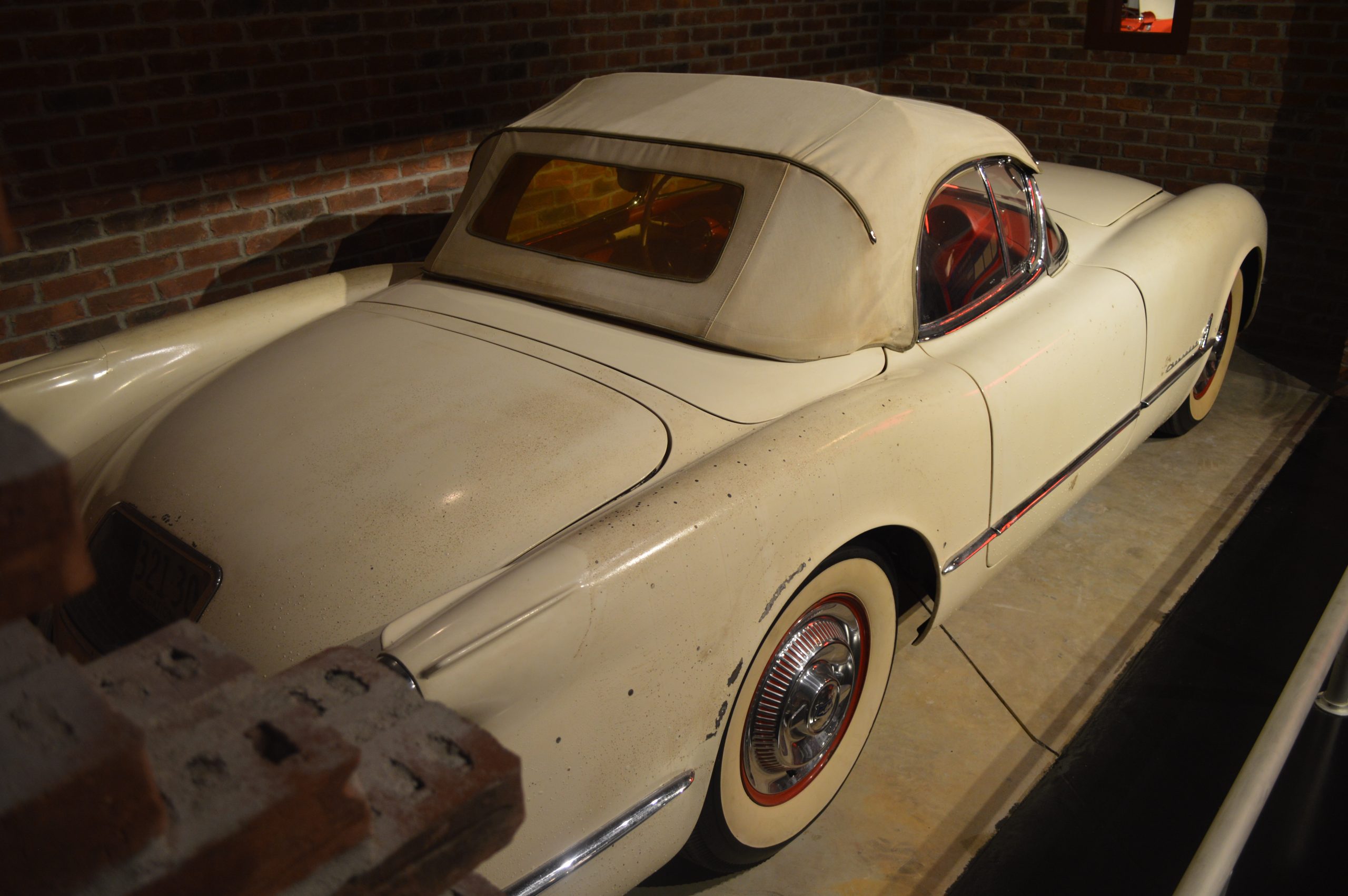
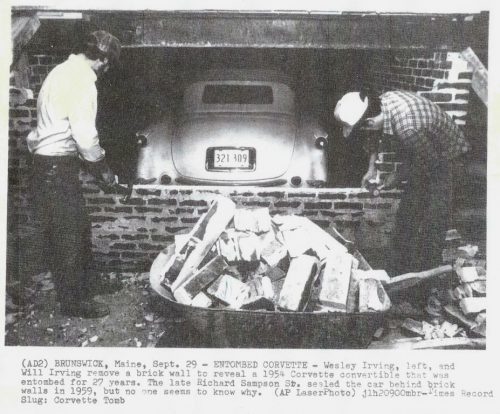
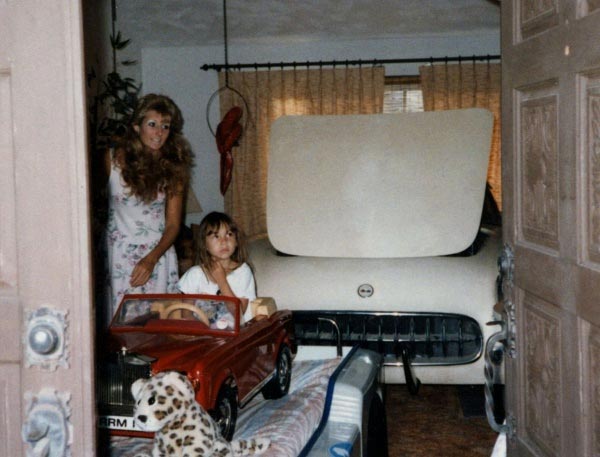
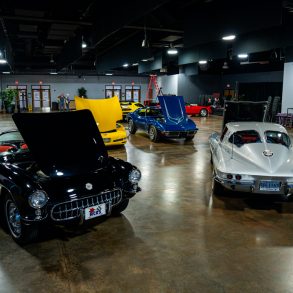

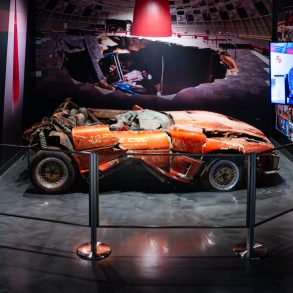
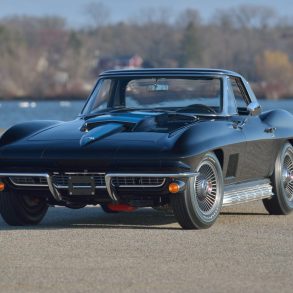
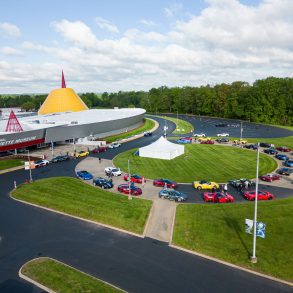


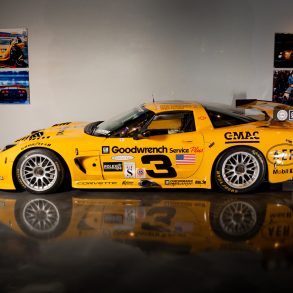

When I was 17 (1963) I fell in love with a ’54 C1 on a seedy used car lot. They were asking $1600, as these cars were not desirable at that time. I asked my dad to co-sign for me. He looked at the car which was in pretty good overall condition, but the gelcoat had spider-web cracking and dad declined saying “You’ll never get a good paint job on that car”.
In 1963 the corvette became a Stingray, and two designs were offered. I bought a new 1964 Corvette roadster with two tops. One for just making a change to a hard top. Was Red with Black interior, white convert top /red hardtop. I sold it when I had 17000 miles on it. I wonder if it’s still around ?
serial number:40867 S—108906, key no.9102. These numbers on my Corvette owner’s card. I wish I had never sold it, but it was the only thing I had to drive, and was always being broken into.